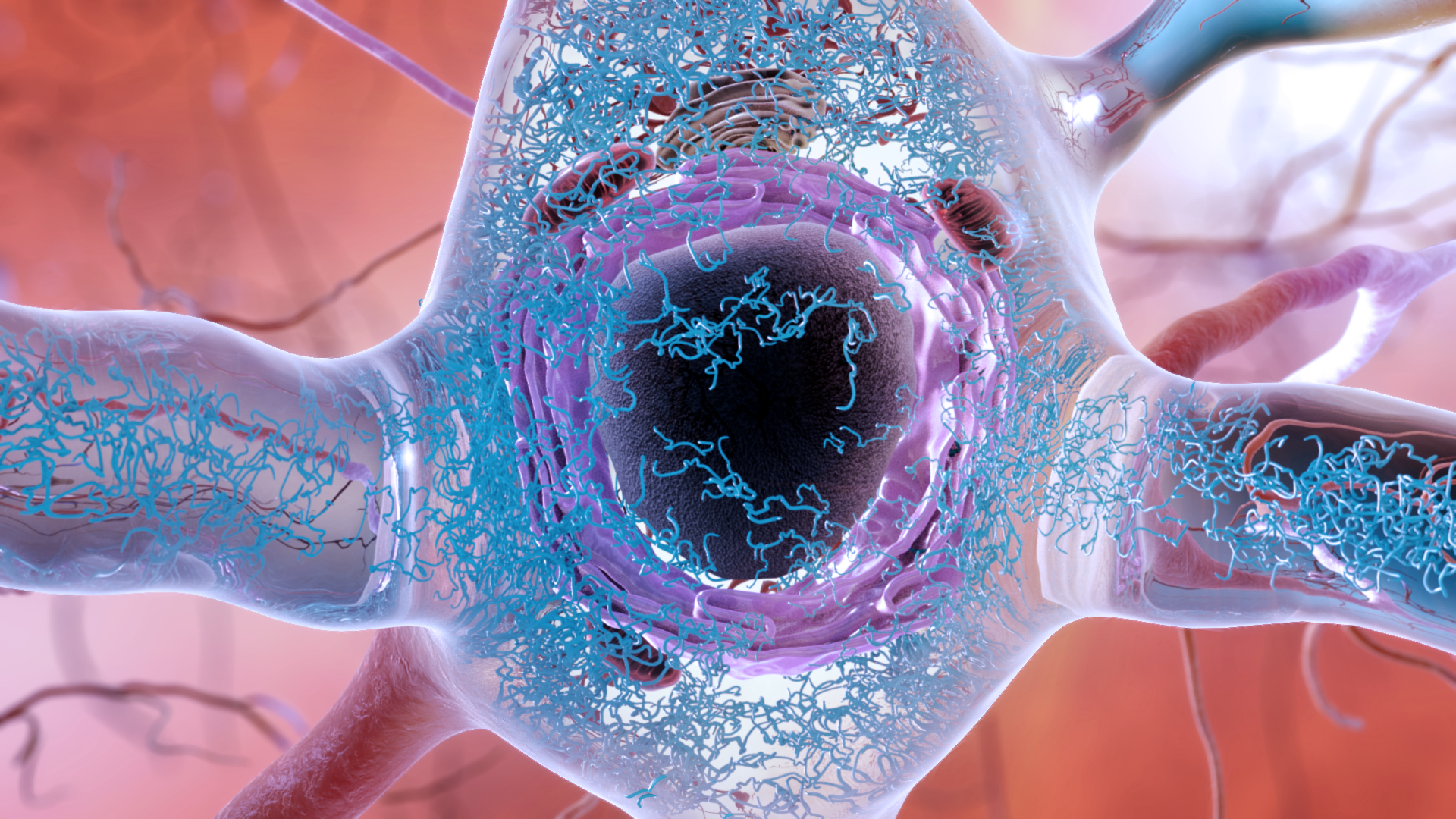Would Disrupting the Way Tau Proteins Copy Themselves Slow Alzheimer's Disease?

NIH
(Inside Science) -- The story of Alzheimer's disease at the cellular level is still in many ways a mystery. Among them is how the disease progresses within the brain, an oft-debated mystery that may finally have an answer thanks to a team of researchers at the University of Cambridge and Harvard Medical School.
Several proteins that inflict the damage within the brain that we recognize as Alzheimer's play significant roles in this story. But none are thought to play a role as significant as the protein known as tau. In a healthy brain, tau helps microscopic structures within the brain's connection points remain straight and strong, but in a brain with Alzheimer's, tau forms twisted tangles that instead limit the flow of information and can cause cellular death. As tau tangles accumulate throughout the brain, the disease worsens.
"For the past 15 years, here in Cambridge, we have been working together with collaborators in trying to answer what was, in principle, a very simple question. Namely: What was the mechanism of protein aggregation?" said Tuomas Knowles, a physical chemist and biophysicist at the University of Cambridge.
The international group's latest work, published last week in the journal Science Advances, shows for the first time in vivo, or using human data (in this case, by imaging slices of Alzheimer's patients' brains), the rate at which tau's journey through the brain progresses. "And as it turns out," said Knowles, "the spreading is not really relevant. That happens very fast."
This discovery goes against a key element of what some researchers believed about Alzheimer's: that the way to slow the disease is to stop the spread of tau between cells. It's what many Alzheimer's medications were designed to do, which Knowles believes could explain the failure of some. It's not that the medications aren't actually blocking rogue tau tangles on their journey throughout the brain -- it's that doing so likely makes a difference so minute it hardly registers. "It's just not the rate-limiting step," explained Knowles.
Instead, he said, it's in the accumulation of tau as it copies itself over and over again that the outcome is determined for the brain. Rather than assembling like an army to deploy a full platoon to each brain regions, think of tau as a small army of sleeper agents that settle down in their new spaces before doing most of their replication.
But it's important not to discount spread entirely, says Tara Spires-Jones, a program leader with the U.K.'s Dementia Research Institute's University of Edinburgh site who was not involved with the research. In the earliest stages of dementia, tau is restricted to areas including the internal cortex, but "it's only when it gets out of that region that you become symptomatic," she said. "I think spread is still a very important part of the process. What was a little bit surprising about this paper is that that stops being important pretty early on."
The discovery came thanks to an approach known as chemical kinetics, which aims to produce a mathematical equation to explain the mechanism and rate of whatever process is being observed. Knowles and his colleagues began over a decade ago by applying chemical kinetics to neurodegenerative proteins -- including tau and another key to Alzheimer's known as amyloid-beta -- in a test tube. Then they studied animal brains as they continued, compiling data to deduce the correct mathematical models.
"It's all about thinking about what the most important things are that there could be going on in the brain, what the most important processes are, and then turning that into equations -- that's really the tricky step," explained George Meisl, a chemist at Cambridge and the paper's first author.
As for whether this discovery will change the course of medication development, Spires-Jones isn't sure. For years, many potential Alzheimer's medications have been aimed at slowing down the disease by sending in antibodies to scoop up tau as it travels between neurons. "Either way," she said, "the idea is, you're going to lower the levels of either total tau or pathological tau."
The most promising part of the finding, all three researchers agree, is that as fast as the rate of tau's spread appears in the final model, its rate of replication is shockingly slow by comparison, taking about five years for each clump of proteins to replicate itself.
That's slower than tau replicates in a test tube, and slower than many other proteins replicate in the body. "What that tells us is that the environment in the brain is actually already doing a pretty good job of slowing down this really dangerous process," Knowles said. "If we could change that time scale from replicating every five years to replicating every 10 years, every 15 years, that would probably already make a huge difference. I think these numbers give us optimism in the sense that we've identified the process that we need to target."

